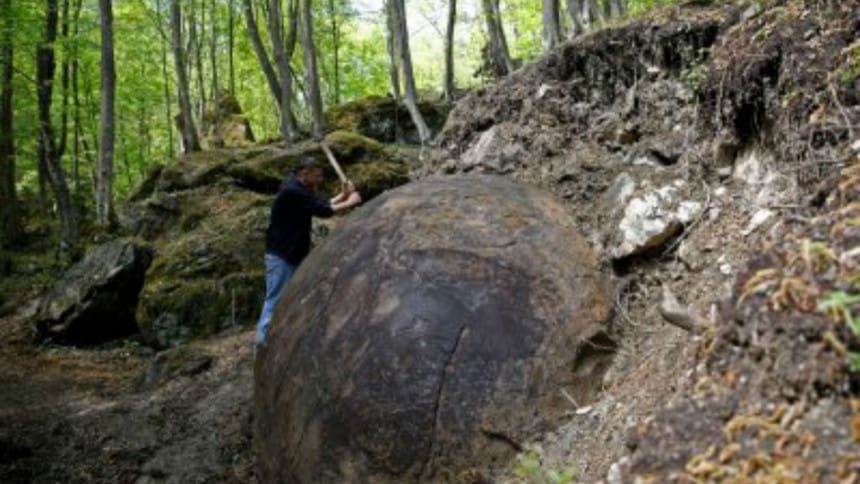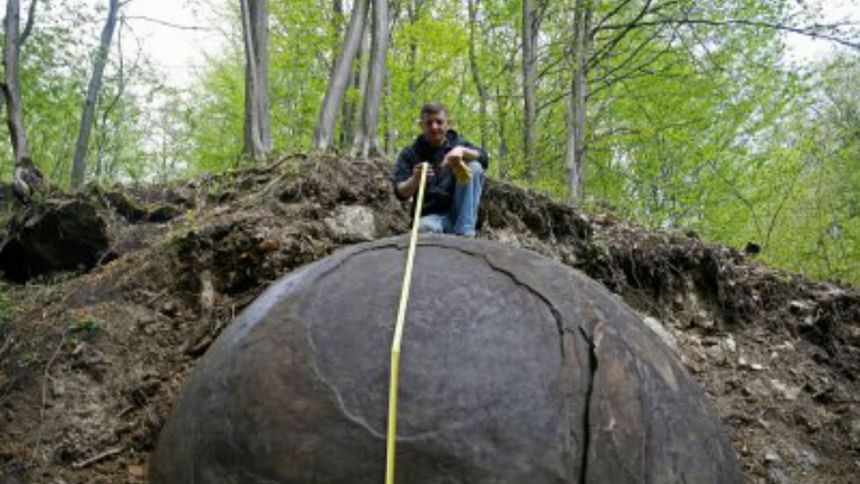Bosnia's Indiana Jones discovers massive stone sphere

Semir Osmanagich, nicknamed the 'Bosnian Indiana Jones' seemed to have made a discovery that sheds light into the ancient civilization in Europe. The giant mysterious sphere embedded in the ground in Bosnia is claimed to be the largest man-made stone ball in Europe, and the oldest in world, dating back more than 1,500 years ago, reports International Business Times.
Semir Osmanagich says the sphere is further proof that Europe had an advanced civilisation that used groundbreaking technology. In 2005, Osmanagich claimed that Bosnia's Visoko Valley was the site of hidden ancient pyramids, linked by underground tunnels. These claims were largely disputed as being "complete fantasy".
Finding more evidence of an ancient civilisation
The stone sphere was discovered in March 2016, 80km north of Visoko, in a forest near the town of Zavidovići. It is roughly three metres across and, Osmanagich claims, it could weigh up to 60 tonnes. He also described it as "the most massive stone ball in Europe".
Stone balls have long been linked with ancient civilisations and examples can be found across the globe. The most famous of these are found in Costa Rica, where over 300 granite balls weighing up to 14 tonnes have been discovered. Known as Las Bolas, they were believed to have been created by the Diquis culture (now extinct).

Osmanagich said there used to be 80 of these stone balls in Bosnia, but most of them were destroyed when rumours started circling among locals that gold was hidden inside them. Just eight remain now, with the latest discovery being the largest.
Osmanagich believes this stone must be man-made as, even though the materials are yet to be analysed, the "brown and red colour of the ball point to very high content of the iron". He says the discovery adds to previous evidence that there was a technologically advanced civilisation living in Bosnia. However, critics say the sphere was most likely the result of natural processes.
Mandy Edwards, from University of Manchester's School of Earth, Atmospheric and Environmental Sciences, told MailOnline she believes the sphere was probably made by the process of 'concretion', where rock is formed by "the precipitation of natural mineral cement within the spaces between sediment grains."

 For all latest news, follow The Daily Star's Google News channel.
For all latest news, follow The Daily Star's Google News channel. 








Comments